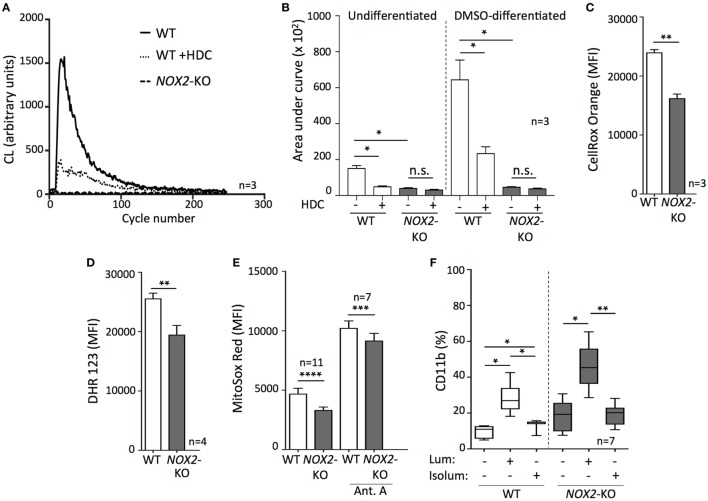Figure 2.
Targeting intracellular reactive oxygen species (ROS) promotes leukemic cell differentiation. (A,B) Measurement of ROS production by chemiluminescence following fMLF stimulation in the presence or absence of histamine dihydrochloride. (A) A representative curve showing the respiratory burst by dimethyl sulfoxide (DMSO)-differentiated wild-type (WT) or NOX2-KO PLB-985. (B) ROS production by undifferentiated and DMSO-differentiated WT or NOX2-KO PLB-985 cells. (C–E) Fluorescent measurement of intracellular ROS in WT and NOX2-KO PLB-985 using flow cytometry: (C) cytoplasmic ROS, and (D,E) mitochondrial ROS. Antimycin A was used to trigger mitochondrial ROS production. (F) WT and NOX2-KO PLB-985 cells were cultured in the presence or absence of luminol or isoluminol for 5 days and the percentage of CD11b+ cells was determined by flow cytometry. Two-tailed paired or unpaired t-tests, one-way ANOVA; *p < 0.05, **p < 0.01, ***p < 0.001, ****p < 0.0001.

